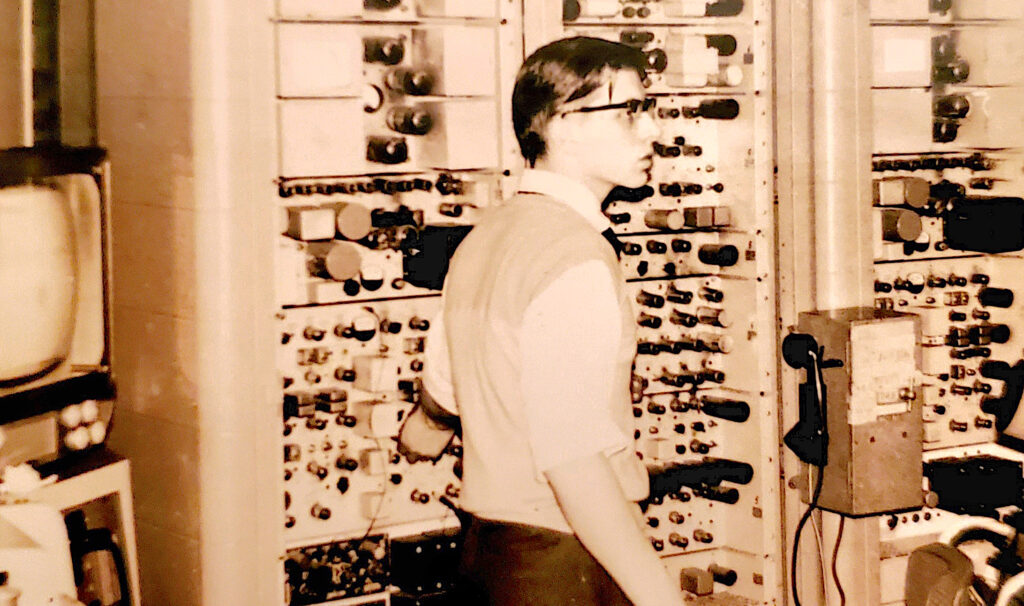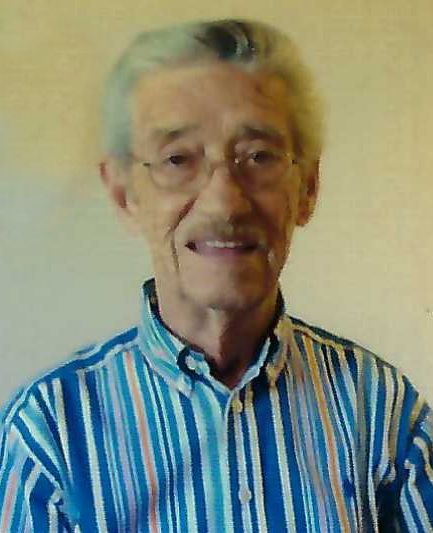‘They were crap’: Adams County man recalls days as TV engineer when he saw Beatles audition in 1962

QUINCY — The Beatles have received so many awards that it would take a while to scroll down this page if they were listed here.
An Academy Award for the song, “Let It Be” … 11 Grammy wins … Inducted into the Rock and Roll Hall of Fame in 1988 … the No. 2 band of all-time behind Led Zepplin according to Forbes Magazine … and according to Rolling Stone magazine, the Beatles were the top band of all time and produced the No. 1 album of all time, “Sgt. Pepper’s Lonely Heart Club Band.”
Keith Dunford, a resident of Bloomfield (an unincorporated community on Illinois Route 336 about nine miles north of Quincy), had a different opinion of the Fab Four the first time he met them.
“They were crap,” he said.
Dunford was born in 1938 near Manchester, England, and he received an electrical engineering degree from Manchester University. After graduating, he accepted an engineer’s position with Granada Studios in Manchester in 1960 at 22 years old. Granada produced television content for ITV, the first commercial television network in Great Britain.

Dunford was on the ground floor of this new medium.
“Within a year, I was doing huge, huge programs … million-dollar programs,” he said. “In those days, there was a huge shortage of anybody that knew anything about television engineering.”
Dunford also did freelance engineering for Decca Records in London. Decca was established in 1929, and it bought the rights to several performers like Bing Crosby in 1932. Decca released Crosby’s “White Christmas” in 1942, and it became the best-selling single ever worldwide.
“Decca … It was like a factory,” Dunford said. “Groups coming and going. We go in many times at eight o’clock in the morning, come out at four in the morning, and we’d be recording one band after the next auditioning to be a part of the Decca family.
“Well, then the Beatles showed up.”
Decca invited the group to audition in late 1962.
“If they were good, Decca was going to sign them,” Dunford said. “We were there all day, from eight o’clock in the morning until six o’clock at night. They were not very good at all. And I don’t think they did one original or two originals of their own music. They were just playing covers of other people’s music, like Chuck Berry, and nobody was impressed.
“This one producer, you could see he was not impressed. He kept saying, ‘Well, give me another one. Give me another one.’ And I think we must have done 20 songs. Normally we just record four or five. I sensed that Decca was not too impressed.”
The Beatles left Decca that day without a contract.
Fast forward a year.
“A producer (from Granada Studios) had just come off vacation (in Hamburg, Germany)”, Dunford explains. “He’s come back with this idea of this band that he found. He said, ‘I saw these guys, and I think I offered them a slot on ‘People and Places.’ And somebody said, ‘What are they called?’ He said, ‘Oh, some kind of bug … I think the Beatles.’
“People and Places” was a 30-minute program in a format like “The Tonight Show” talk show with a host and co-host. A house band performed every night.
“I get called to the production office,” Dunford said, “The producer says, ‘Do me a favor. Go down to the Cavern Club, sit in the back incognito and listen to them.’”
Liverpool’s Cavern Club is where The Beatles’ popularity started in the United Kingdom. The group played there nearly 300 times between 1961 and 1963.
‘They did a lunchtime gig every day,” Dunford said. “I went down in the morning, sat there in the back. (As the engineer) I had to figure out how much noise these guys made and whether we could accommodate that in our little studio. I went back on a Monday morning, and the producer asked, ‘So what do you think of them?’ I said ‘They were crap. They were terrible.’
“The acoustics were terrible in the club, but I didn’t like what they played. They didn’t play anything original.”
However, the producer had the last say. The Beatles were booked and made their first television appearance of any kind on “People and Places” in October 1962. The group sang “Some Other Guy” and “Love Me Do.”
They performed a few more times on “People and Places” and soon signed with EMI and George Martin.
“They were fabulous guys,” Dunford said. “They really were, but they were shy when they first came into the studio for their first show. There was a lot of nervousness. But you know, when you go on television for the first time in your life, and this could make or break you in a way, you are going to be nervous.”
Dunford eventually went on to design and oversee construction of television and radio studios worldwide for more than 30 years. Solving a problem with a Harris Broadcast (now Imagine Communications) transmitter at a South African studio led to an invitation to visit Quincy in 1975. He was then offered and accepted a position as a consultant and settled in Adams County.
Dunford remains active in the field, providing voice-over work from his home studio for Chicago’s CRIS Radio and New York’s Gatewave Radio, which serve the needs of the blind, disabled and veteran communities.
A lot of history walked through the doors during those days he spent in Manchester at the Granada Studio in the early years of television. Hundreds of acts made their first television appearances in front of Dunford including Sonny & Cher, Tom Jones, Shirley Bassey, Lulu and The Carpenters.
But The Beatles? At the time … just another band.
“Don’t tell me about the Beatles,” Dunford said. “The Moody Blues were better, way better.”
Miss Clipping Out Stories to Save for Later?
Click the Purchase Story button below to order a print of this story. We will print it for you on matte photo paper to keep forever.

